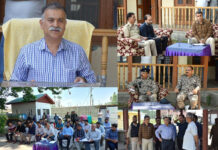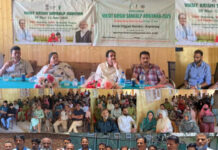In the labyrinth of Indian politics, the presence and participation of women have long been relegated to the sidelines, overshadowed by entrenched patriarchal norms and systemic barriers. While strides have been made in recent years to promote gender equality and women’s empowerment, the journey toward the full inclusion of women in Indian politics remains fraught with challenges and obstacles. As we take stock of progress and confront the enduring barriers, it becomes imperative to shine a spotlight on the critical issue of women’s representation in the political arena. Over the years, legislative reforms have played a pivotal role in promoting women’s representation in Indian politics. Measures such as reservation of seats for women in local bodies (Panchayats and Municipalities) through the 73rd and 74th Constitutional Amendments have significantly increased women’s participation in grassroots governance. The rise of women leaders in various political parties and their active involvement in decision-making processes have contributed to breaking stereotypes and challenging traditional gender roles. Women’s political empowerment movements and initiatives such as the Women’s Reservation Bill aim to ensure greater representation of women in state and national legislatures. Grassroots movements and civil society organizations have played a crucial role in mobilizing women, raising awareness about their rights, and empowering them to participate actively in political processes. Initiatives such as voter education programs, leadership training workshops, and advocacy campaigns have helped amplify women’s voices and advance their political aspirations. Deep-rooted Patriarchal Norms: Despite legislative reforms and societal progress, deep-rooted patriarchal norms continue to pose significant challenges to women’s participation in Indian politics. Cultural biases, social stigma, and gender stereotypes often deter women from entering the political arena and inhibit their ability to assert leadership roles. Structural barriers within political parties, such as lack of internal democracy, limited opportunities for women in candidate selection processes, and male-dominated party structures, perpetuate gender disparities and impede women’s advancement in politics. The absence of conducive environments and support systems further marginalizes women within political institutions. Women politicians frequently face intimidation, harassment, and violence, both online and offline, as a means to deter their participation in politics and silence their voices. The culture of impunity surrounding such acts exacerbates the vulnerability of women in politics and undermines their ability to engage in public life freely and fearlessly. Enacting Women-Centric Policies: Implementing gender-sensitive policies and affirmative action measures to promote women’s representation in politics is essential. This includes advocating for the passage of the long-pending Women’s Reservation Bill to ensure a more equitable distribution of seats in state and national legislatures. Creating Supportive Ecosystems: Creating supportive ecosystems within political parties and electoral institutions is crucial to fostering an environment conducive to women’s participation and leadership. This involves promoting gender diversity in party structures, instituting transparent and inclusive candidate selection processes, and providing resources and mentorship opportunities for aspiring women leaders. Tackling gender-based violence and ensuring the safety and security of women in politics require concerted efforts by law enforcement agencies, political institutions, and civil society. Implementing robust mechanisms for reporting and redressal, raising awareness about the impact of violence on women’s political participation, and holding perpetrators accountable are essential steps in combating this pervasive issue.
The inclusion of women in Indian politics is not just a matter of gender equality; it is imperative for the health and vitality of democracy. By addressing the structural barriers, challenging patriarchal norms, and creating enabling environments for women’s political participation, we can harness the full potential of half the nation and pave the way for a more inclusive and representative democracy.






























